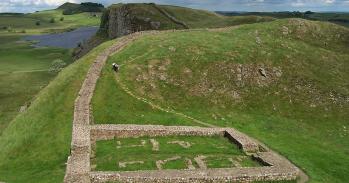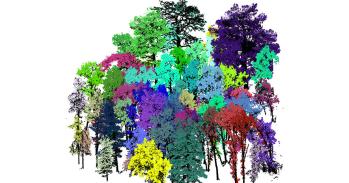
Pollutants preserved in Antarctic ice document historic fires in the Southern Hemisphere, offering a glimpse at how humans have impacted the landscape and providing data that could help scientists understand future climate change.
Pollutants preserved in Antarctic ice document historic fires in the Southern Hemisphere, offering a glimpse at how humans have impacted the landscape and providing data that could help scientists understand future climate change.
Researchers from the University of Cambridge and the British Antarctic Survey tracked fire activity over the past 150 years by measuring carbon monoxide trapped in Antarctic ice. This gas is released, along with smoke and particulates, by wildfires, cooking and communal fires.
The findings, reported in the Proceedings of the National Academy of Sciences, reveal that biomass burning has been more variable since the 1800s than had been thought. The new data could help improve climate models, which rely on information about past atmospheric gases, such as carbon monoxide, to improve their forecasts.
“We’ve been missing key information from the period when humans started to dramatically alter Earth’s climate; information needed to test and develop climate models,” said Rachael Rhodes, senior author of the paper from Cambridge’s Department of Earth Sciences.
The new carbon monoxide record fills that gap in time. The researchers charted the strength of biomass burning between 1821 and 1995 by measuring carbon monoxide in ice cores from Antarctica. The layers of ice inside these cores formed when snow was buried under subsequent years’ snowfall, encasing pockets of air that directly sample the atmosphere's composition at the time.
“It’s rare to find trace gases trapped in ice cores for the most recent decades,” said Ivo Strawson, lead author of the study who is jointly based at Cambridge Earth Sciences and the British Antarctic Survey. “We need information on the atmosphere's composition following the onset of industrialisation to reduce uncertainties in climate models, which rely on these records to test or drive their simulations.”
A major difficulty with taking gas measurements from very young ice is that pressurised air bubbles haven’t had time to form under the weight of more snow, said Strawson. To get around this problem, the researchers studied ice from locations where snow accumulates rapidly. These ice cores, held in BAS’ dedicated Ice Core Laboratory, were collected from the Antarctic Peninsula as part of previous international projects.
To measure carbon monoxide, the researchers developed a state-of-the-art analysis method, which melts ice continuously while simultaneously extracting the air. They collected tens of thousands of gas measurements for the past 150 years.
The researchers found that the strength of biomass burning has dropped steadily since the 1920s. That decline, said Rhodes, coincides with the expansion and intensification of agriculture in southern Africa, South America, and Australia during the early 20th century. With wildlands converted into farmland, forest cover was restricted and in turn fire activity dropped. “This trend reflects how land conversion and human expansion have negatively impacted landscapes and ecosystems, causing a major shift in the natural fire regime and in turn altering our planet’s carbon cycle,” said Rhodes.
One assumption made by many climate models, including those used by the IPCC, is that fire activity has increased in tandem with population growth. But, said Rhodes, “our work adds to a growing mass of evidence that this assumption is wrong, and the inventories of historic fire activity need to be corrected so that models can accurately replicate the variability we see in our record.”
Rachael Rhodes is a Fellow of Wolfson College, Cambridge.
Reference:
Ivo Strawson et al. "Preindustrial Southern Hemisphere biomass burning variability inferred from ice core carbon monoxide records." Proceedings of the National Academy of Sciences(2024). DOI: https://doi.org/10.1073/pnas.2402868121

The text in this work is licensed under a Creative Commons Attribution-NonCommercial-ShareAlike 4.0 International License. Images, including our videos, are Copyright ©University of Cambridge and licensors/contributors as identified. All rights reserved. We make our image and video content available in a number of ways – on our main website under its Terms and conditions, and on a range of channels including social media that permit your use and sharing of our content under their respective Terms.




